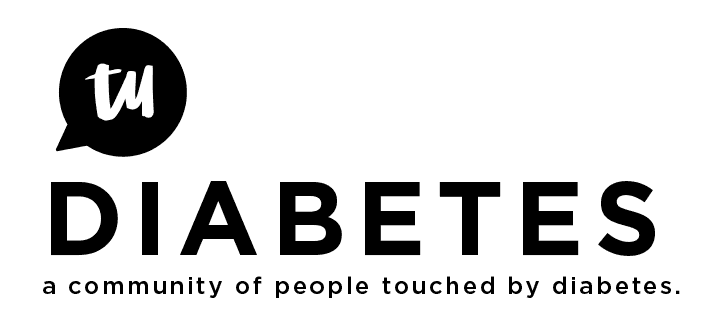While participating in Richard's thread on Starvation Diet from 1916, BSC brought up a point about tight control, the founding of the ADA, and the DCCT. This stirred a memory of something I had read in James Hirsch's book, Cheating Destiny. I found what I was looking for and, so as to not hijack that thread, decided to post my findings here.
The diabetes controversy that led to the founding of the ADA and the DCCT (information found in Cheating Destiny, by James Hirsch)
Who: Elliot Joslin, Boston Brahmin, founder of the Joslin Diabetes Clinic, first president of the American Diabetes Association. While dedicated to his patients, was also rigid and inflexible. Any and all deviations from his prescribed routine and beliefs, including avoiding hypoglycemic reactions in public, were met with scorn and ridicule. He believed diabetes to be a punishment of the obese for being too gluttonous. He insisted on extreme self-control and could be said to be the founder of the “take as little diabetes medication as possible and stick to a strict diet” philosophy. Essentially, he believed, “You are diabetic or have problems with your diabetes because of a moral/character flaw”. Edward Tolstoi, extroverted immigrant to New York and founder of the American Diabetes Association. Believed Joslin’s philosophy put patients in “a medical straitjacket, injuring them emotionally while increasing their risk of hypoglycemia” and in response, was one of the strongest proponents of the “free diet”.
What they wanted: Joslin insisted on the tightest control possible at the time. Urine was to be sugar free at all times through strict adherence to insulin regimen, regular vigorous exercise, and exacting dietary compliance through weighing and measuring. In one way, he might have preferred to have his patients in the hospital at all times so he could ensure they stuck to his regimen. Tolstoi wanted to remove the burden of shame from the diabetic, to allow them to eat without having to weigh and measure every gram of food eaten. Patients should not be made to feel guilty for not having absolutely perfect blood sugars, but should be allowed to live as normal a life as possible. He showed that, even with the best control available back in the 1940s and 1950s, diabetics died with and from the same complications as those with the worst control. If the complications and death are inevitable, then why not allow them to enjoy the cheesecake without guilt?
Why was this not resolved until the 1980s and the DCCT? Hirsch asserts that both “tightly controlled” and more loosely controlled diabetics developed complications at the same rate because, at that time, the tools were not available to adequately control blood glucose all the time. Joslin may have thought he was keeping his patients “tightly controlled”, and it was an improvement over the pre-insulin era, but it was not near enough to keep people from having complications. With the development of blood glucose meters and the A1c test in the 1980s, the average diabetic now had the tools to more tightly manage his/her blood glucose.
Findings of the DCCT: Retinopathy and nephropathy (eye and kidney disease) were substantially decreased in those who were managed under tight control. Long-term follow up showed a decrease in the incidence of heart disease for those under tight control. Complications: Hypoglycemic events increase 300%, so instead of becoming rare, became far more frequent. Weight gain, sometimes substantial (on order of 100 lbs for one person I met) is common among the tightly controlled group. Limitations: Motivating patients to test bgs frequently, take 4-8 injections/day of insulin or to attach themselves to a pump, to write down everything they eat, etc. is not as easy as the doctors thought it would be. While patients did not drop out, CDEs and dietitians found they had to frequently call the members of the tight control group, and even bribe them to keep them “compliant” with the regimen. The DCCT used newly-diagnosed, young adult Type 1 diabetics, which are not the norm for people with diabetes. When doctors tried to apply the findings to children, the results were sometimes devastating. With adult type 1s who had diabetes for some time and who had complications (especially retinopathy), tight control made the situation worse. Finally, ADVANCE and ACCORD were done to see if the findings could be extended to older type 2s. Results from those studies are mixed and for some type 2s, tight control may be inappropriate, though both of these studies have been criticized for their flaws.
My take-away: While Joslin was right and tight control does matter, Tolstoi also has a point. Over the past 17.5+ years, I have seen many patients who have been made to feel that their complications are “all their fault”, that their inability to lose weight is a moral failing, and that severe hypoglycemia – blood sugars under 30 with seizures – is simply a “fact of life” for type 1s who are tightly controlled. As James Hirsch writes:
“’The problem with the DCCT was the whole fixation on causality, and the other side of causality is blame: “It’s your fault,”’ said Howard Wolpert, a senior physician at Joslin. Some of his patients have been badgered by other doctors for failing to meet glycemic targets, and he refers to some physicians as ‘fascists’ in their use of high-pressure, accusatory tactics…Moreover, the DCCT created unrealistic expectations. Its volunteers, already highly motivated, had access to teams of specialists at academic centers and were never limited by financial considerations, circumstances that few patients can duplicate…in subsequent studies of the same volunteers…the average A1c increased to 8.0 from 7.0. ‘The first lesson,’ Kahn said, ‘is that it is very difficult to achieve these goals.’”
Obviously, a better balance between the Joslin and Tolstoi extremes needs to be struck.
